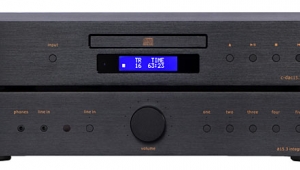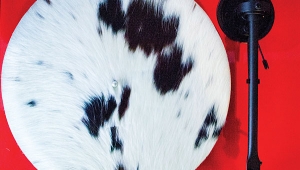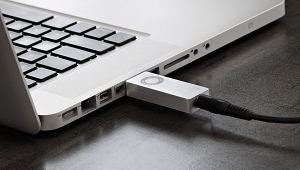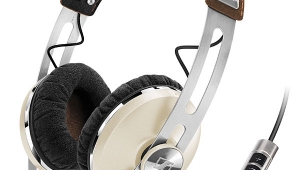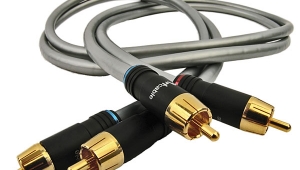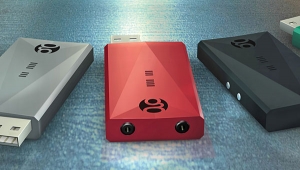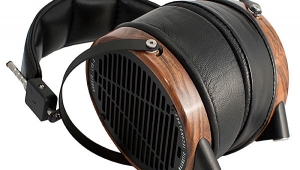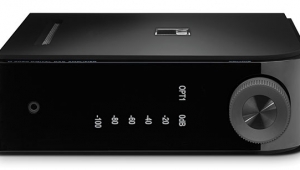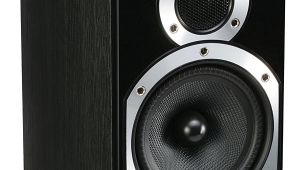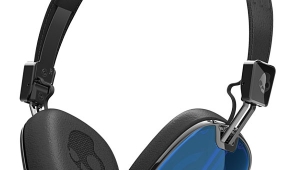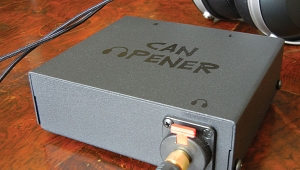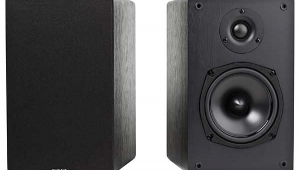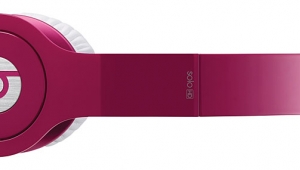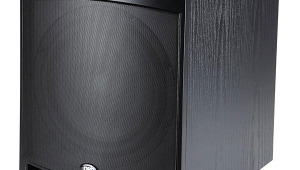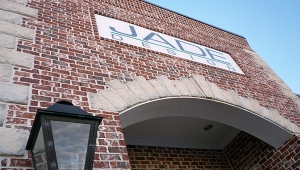| Columns Retired Columns & Blogs |
Wharfedale has been making great loudspeakers for quite some time now. I'm sure these are no exception. And your right, These are absolutely gorgeous.
Those drivers look like they could withstand an atomic bomb. Quality!
Mark Evans
 The answer came easy. It would have to be John Prine's self-titled debut (LP, Atlantic SD 19156), a recent gift from my friend Michael Lavorgna. Prine was only 24 when the album was released in 1971, but, as Kris Kristofferson enthuses in the liner notes, Prine "writes like he's two hundred and twenty." Yeah, there's a great and tender wisdom in songs like "Spanish Pipedream," "Sam Stone," "Angel from Montgomery," "Six O'Clock News," and "Donald and Lydia," to name just a few from this masterwork. It's a mystery how someone so young could compile such an outstanding collection. The world is rich.
The answer came easy. It would have to be John Prine's self-titled debut (LP, Atlantic SD 19156), a recent gift from my friend Michael Lavorgna. Prine was only 24 when the album was released in 1971, but, as Kris Kristofferson enthuses in the liner notes, Prine "writes like he's two hundred and twenty." Yeah, there's a great and tender wisdom in songs like "Spanish Pipedream," "Sam Stone," "Angel from Montgomery," "Six O'Clock News," and "Donald and Lydia," to name just a few from this masterwork. It's a mystery how someone so young could compile such an outstanding collection. The world is rich.
 From John Prine I traveled to Archie Shepp and Horace Parlan's Trouble in Mind (LP, SteepleChase SCS1139), recorded by Freddie Hansson on February 6, 1980, at Sweet Silence Studios, in Denmark. Some might write this off as "an audiophile recording"—ie, great sound and little musical value—but that would be an unfortunate mistake. Harlan is deep in the pocket here, and Shepp blows rings of notes as if they were so much cigarette smoke, chuckling and wheezing and whistling into the dark night like some sad blues singer whose woman has just left him for some other musician not half as good. It's all so lovely and lazy, and though Shepp's tenor sax through this system wasn't as round or as full-figured as I've heard it through my previous system, there was enough resolution that I could hear his deft fingers on his horn's keys—and I had no problem following pianist Harlan's graceful blues runs on numbers like the sultry title track and the determined "Goin' Down Slow."
From John Prine I traveled to Archie Shepp and Horace Parlan's Trouble in Mind (LP, SteepleChase SCS1139), recorded by Freddie Hansson on February 6, 1980, at Sweet Silence Studios, in Denmark. Some might write this off as "an audiophile recording"—ie, great sound and little musical value—but that would be an unfortunate mistake. Harlan is deep in the pocket here, and Shepp blows rings of notes as if they were so much cigarette smoke, chuckling and wheezing and whistling into the dark night like some sad blues singer whose woman has just left him for some other musician not half as good. It's all so lovely and lazy, and though Shepp's tenor sax through this system wasn't as round or as full-figured as I've heard it through my previous system, there was enough resolution that I could hear his deft fingers on his horn's keys—and I had no problem following pianist Harlan's graceful blues runs on numbers like the sultry title track and the determined "Goin' Down Slow."
 Something about that last song—I won't say what—reminded me of a book I've just finished reading, Gabriel Garc°a Márquez's hot and dirty Memories of My Melancholy Whores. In it, the protagonist, an old columnist and music writer, decides to give himself, on his 90th birthday, the gift of a night with a virgin. The book should be required reading for all audiophiles—as awful as it might sound, it's actually the story of love's crippling and inspiring power, a power that persists even as we approach our final days. In the novel, our bachelor enjoys listening to records. One scene has him "taking refuge in an exquisite program of music: Wagner's Rhapsody for Clarinet and Orchestra [sic], Debussy's Rhapsody for Saxophone, and Bruckner's String Quintet . . ." He describes the last as "an edenic oasis in the cataclysm of [Bruckner's] work," so I knew I had to purchase it (Heutling Quartet with Heinz Otto Graf on EMI Electrola 1C 063-29 100, recorded in 1972.)
Something about that last song—I won't say what—reminded me of a book I've just finished reading, Gabriel Garc°a Márquez's hot and dirty Memories of My Melancholy Whores. In it, the protagonist, an old columnist and music writer, decides to give himself, on his 90th birthday, the gift of a night with a virgin. The book should be required reading for all audiophiles—as awful as it might sound, it's actually the story of love's crippling and inspiring power, a power that persists even as we approach our final days. In the novel, our bachelor enjoys listening to records. One scene has him "taking refuge in an exquisite program of music: Wagner's Rhapsody for Clarinet and Orchestra [sic], Debussy's Rhapsody for Saxophone, and Bruckner's String Quintet . . ." He describes the last as "an edenic oasis in the cataclysm of [Bruckner's] work," so I knew I had to purchase it (Heutling Quartet with Heinz Otto Graf on EMI Electrola 1C 063-29 100, recorded in 1972.)






